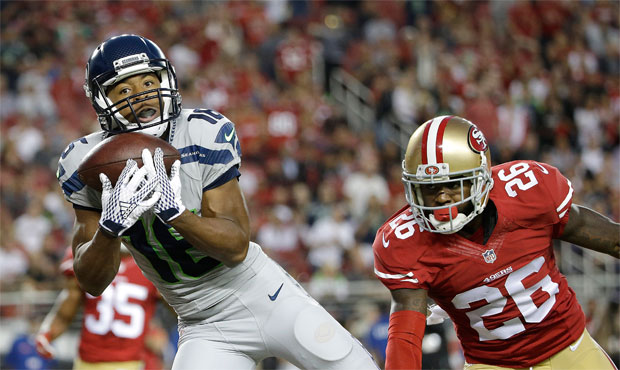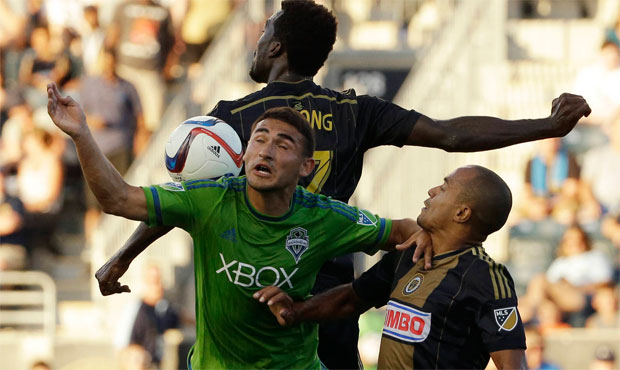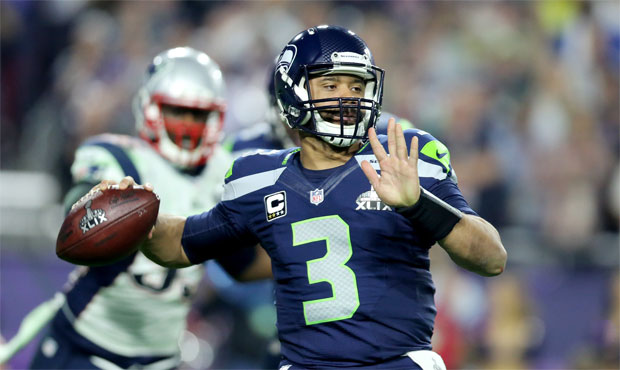Brady Henderson
Seahawks may have found formula to reduce sacks on Russell Wilson
 Sunday's game against Dallas was the first in two seasons in which the Seahawks didn't allow a sack. (AP)
Sunday's game against Dallas was the first in two seasons in which the Seahawks didn't allow a sack. (AP)
RENTON – The Seahawks made it a priority above all else last week to reduce the near record rate at which Russell Wilson was being sacked, a problem that was holding back their offense not to mention threatening the health of their franchise quarterback.
Coach Pete Carroll isn’t ready to declare that Seattle has solved it once and for all, of course, but he is encouraged that the Seahawks may have discovered a template to help keep Wilson upright.
“I think we’ve found a mix that we like and hopefully we can keep building on it,” Carroll said Monday, a day after the Seahawks didn’t allow a sack in their 13-12 win over Dallas. “It’s just one game, it doesn’t mean you’ve made it over the hump, but it’s a good indication it’s going in the right direction.”
Not since Super Bowl XLVIII two seasons ago had the Seahawks finished a game without allowing a sack. They had allowed a league-high 31 of them over the first seven games, which put them on pace to approach the NFL’s single-season record of 76.
Improved pass protection wasn’t the only contributing factor Sunday against Dallas, but it was one of them. Carroll praised Alvin Bailey for the job he did filling in for an injured Russell Okung at left tackle, especially given the tough matchup he faced against Cowboys pass-rusher Hardy. Carroll said guards Justin Britt and J.R. Sweezy played as well as they have all season.
“You saw a really good job by the O-line to take care of business against a really good rush group,” he told “Brock and Salk” on 710 ESPN Seattle.
The Seahawks also made things easier on their offensive line with a game-plan that featured more quick throws and roll-outs that were designed to help Wilson either get rid of the ball before the pass-rush could arrive or move him away from it.
That approach was evident from Seattle’s opening drive. Wilson’s first four attempts included a quick throw to Jimmy Graham up the seam following a read-option fake, a play-action bootleg to his right on which he hit Doug Baldwin near the sideline, a shovel pass to Fred Jackson on a three-step drop and then a bubble screen to Tyler Lockett. Wilson wasn’t touched until his fifth and final attempt of that drive, which was thwarted by tight coverage.
“It takes a lot of moving parts to get that done,” Carroll said. “Everybody has to contribute to it. It’s everybody’s responsibility to help us get the ball out. That’s running the routes as well as throwing it and, of course, protecting.”
There is an underside to that approach. Quicker throws generally require shorter routes from receivers, which aren’t as conducive to big gains. Wilson’s numbers against Dallas bear that out. He only completed one pass of more than 20 yards, and his yards-per-attempt average of 7 was his lowest since Week 2.
Carroll and the Seahawks can live with that if it means mitigating what has been their offense’s biggest problem.
“It was more important to not have negative plays than almost anything that happened in the game-plan,” Carroll said. “That was conveyed and we got it done.”

























Comments